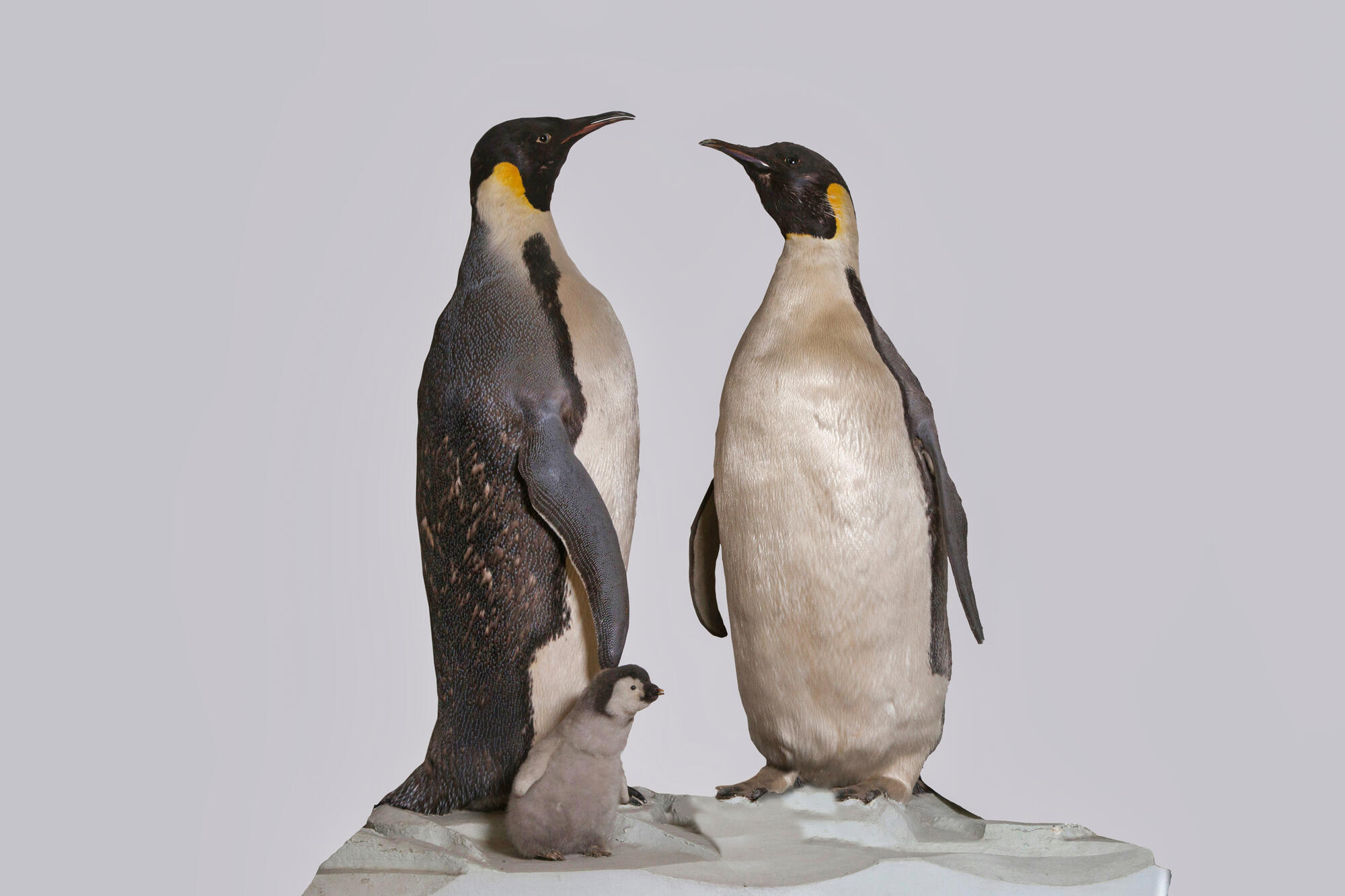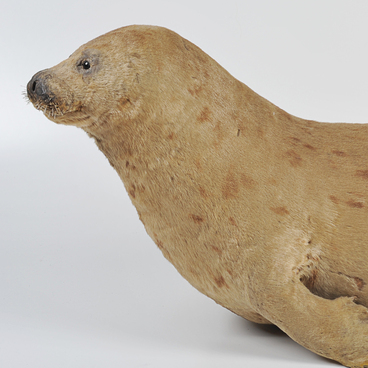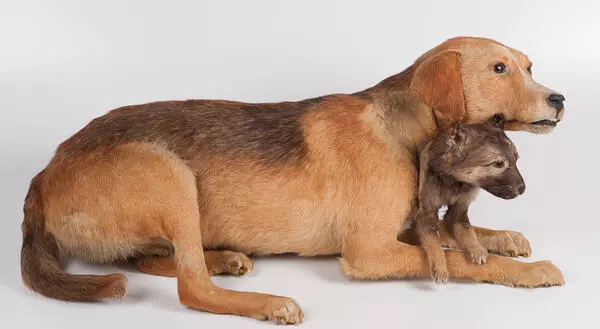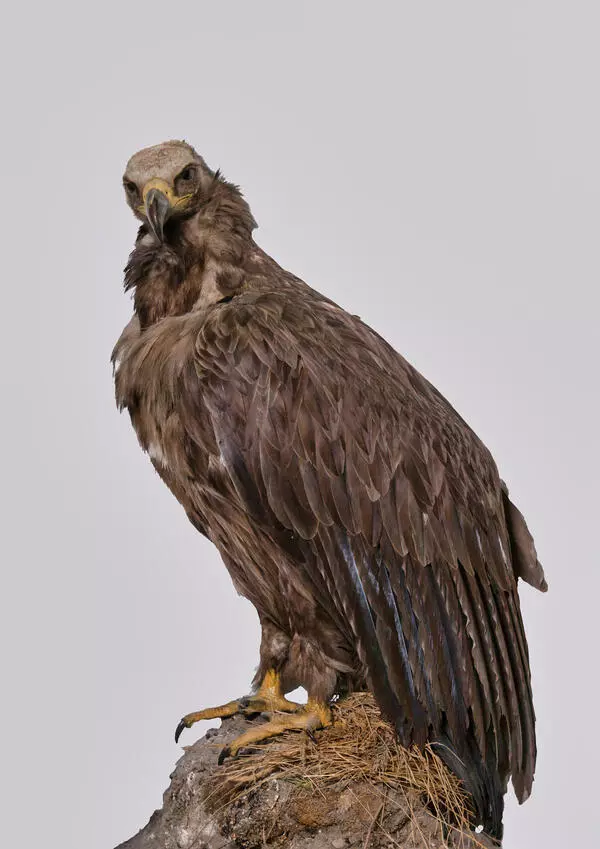Sixty million years ago, strange-looking creatures first appeared on Earth: they had wings completely unsuitable for flight; their feathers looked more like scales, and were very tightly attached. On land, these creatures stood upright. They were distant relatives of non-bird dinosaurs — penguin-like creatures, the most ancient representatives of modern penguins.
Today there are 18 species of penguins on Earth and all of them live in the Southern Hemisphere. These birds have become a symbol of Antarctica, although only two species nest on the continent itself, including the largest of today’s penguins — the emperor penguin.
Despite their impressive height (about 120 centimeters), emperor penguins are very shy and not aggressive at all.
Emperor penguins live on the ice floes around Antarctica. However, they migrate to the mainland to mate and incubate their eggs in the dead of the harsh Antarctic winter, when temperatures drop below –50 °C° and the wind flow speed is up to 200 kilometers per hour. The penguins set up their nesting colonies in places protected from strong winds, and during severe frosts, they gather in tight groups and keep each other warm.
Although their colonies are called nesting colonies, penguins do not build real nests. As soon as the female lays a single egg, it is immediately taken up by the male and nurtured on his paws in the skin fold. At the same time, the female goes to feed on oceanic fish and small crustaceans. The male and female penguins with loud and, observers say, ‘jubilant’ cries greet the arrival of the egg.
The male incubates the egg and does not eat anything but snow for more than two months. As a result, he loses about 40 percent of his weight. If the chick hatches before the female returns, the male feeds it with the secretion of a special gland, which is rich in protein. When the female returns, she feeds the baby penguin with the mush of crustaceans and fish accumulated in her stomach.
When the baby penguins get a little older, they gather in so-called ‘nurseries’ of 20 or more little penguins. They are looked after by several adults.
In January in the middle of the Antarctic summer when the little penguins already know how to swim, they go into the ocean with their parents. Their flapping wings help them move so easily that seals can hardly keep up with them. Most emperor penguins return to the nesting colony about 4 years after birth. They begin breeding for the first time when they turn 5 or 6 years old.
Today there are 18 species of penguins on Earth and all of them live in the Southern Hemisphere. These birds have become a symbol of Antarctica, although only two species nest on the continent itself, including the largest of today’s penguins — the emperor penguin.
Despite their impressive height (about 120 centimeters), emperor penguins are very shy and not aggressive at all.
Emperor penguins live on the ice floes around Antarctica. However, they migrate to the mainland to mate and incubate their eggs in the dead of the harsh Antarctic winter, when temperatures drop below –50 °C° and the wind flow speed is up to 200 kilometers per hour. The penguins set up their nesting colonies in places protected from strong winds, and during severe frosts, they gather in tight groups and keep each other warm.
Although their colonies are called nesting colonies, penguins do not build real nests. As soon as the female lays a single egg, it is immediately taken up by the male and nurtured on his paws in the skin fold. At the same time, the female goes to feed on oceanic fish and small crustaceans. The male and female penguins with loud and, observers say, ‘jubilant’ cries greet the arrival of the egg.
The male incubates the egg and does not eat anything but snow for more than two months. As a result, he loses about 40 percent of his weight. If the chick hatches before the female returns, the male feeds it with the secretion of a special gland, which is rich in protein. When the female returns, she feeds the baby penguin with the mush of crustaceans and fish accumulated in her stomach.
When the baby penguins get a little older, they gather in so-called ‘nurseries’ of 20 or more little penguins. They are looked after by several adults.
In January in the middle of the Antarctic summer when the little penguins already know how to swim, they go into the ocean with their parents. Their flapping wings help them move so easily that seals can hardly keep up with them. Most emperor penguins return to the nesting colony about 4 years after birth. They begin breeding for the first time when they turn 5 or 6 years old.







